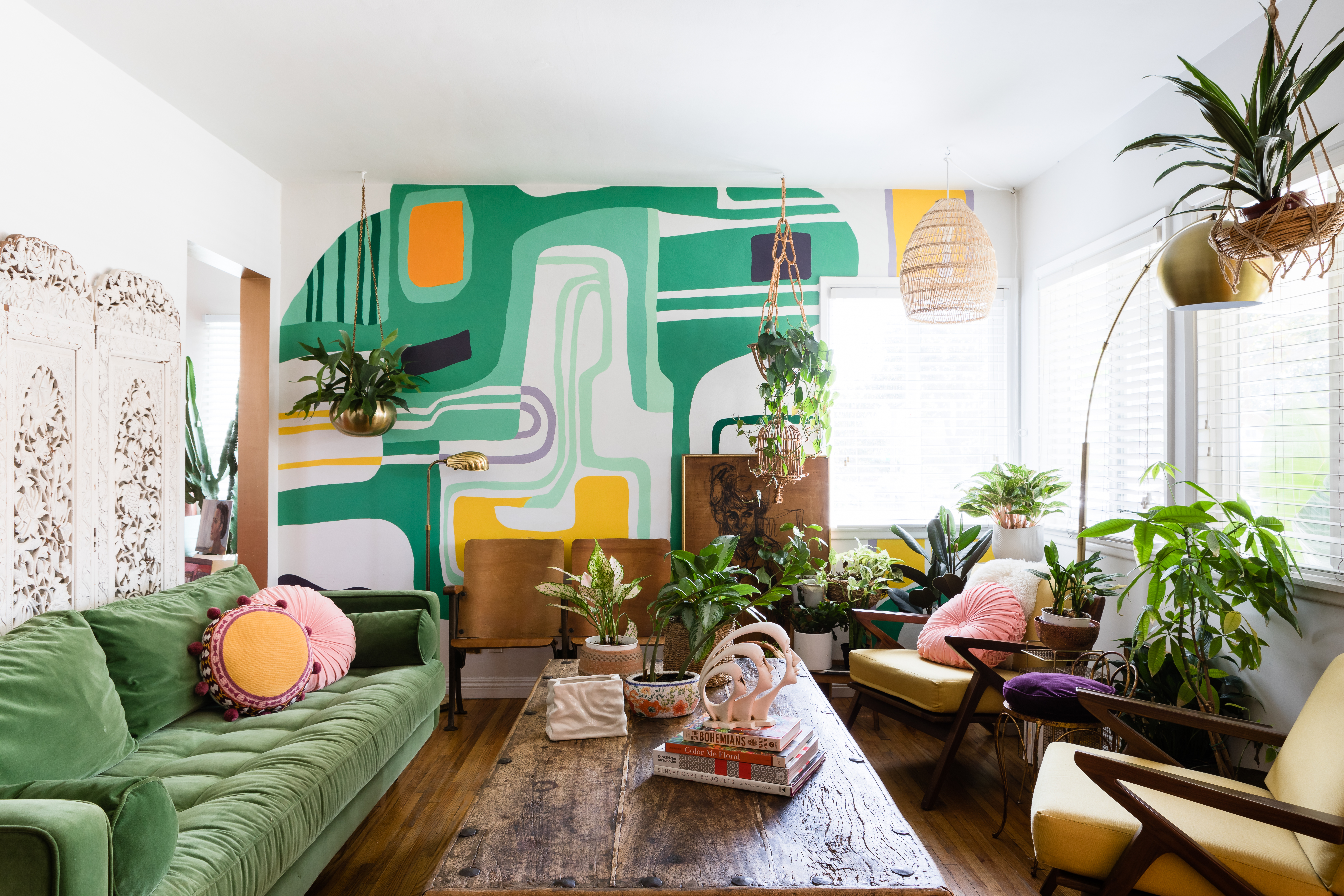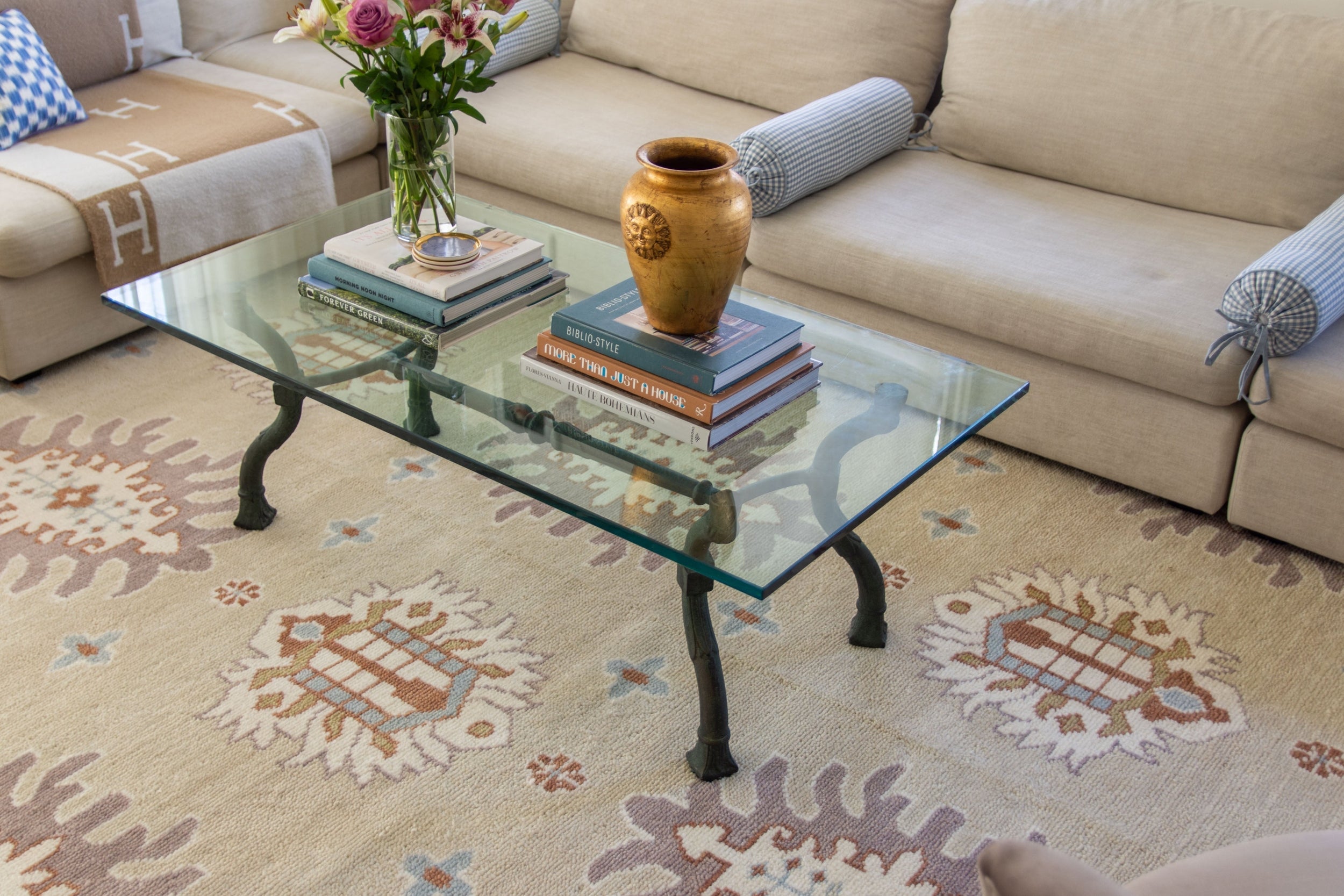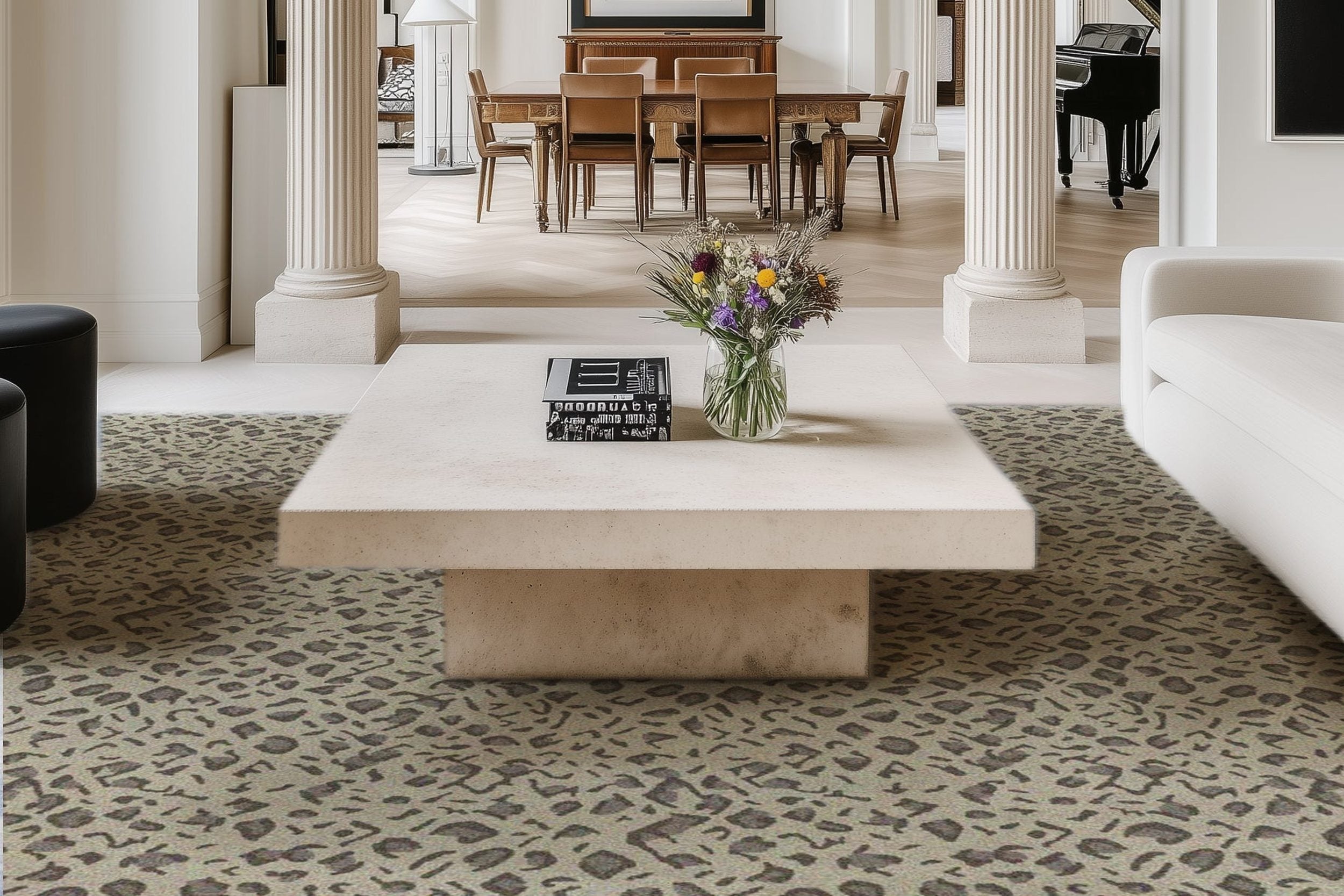6 Cheerful Ways of Decorating with Artwork to Brighten Your Living Room
 Paintings have a remarkable influence on the atmosphere of a living room. The right piece can brighten the space, shift the mood, and introduce a sense of harmony that reshapes how the entire room feels. Many homeowners admire custom artworks and feel inspired to create something meaningful for their own walls. Even people with no drawing or painting background often wish they could produce artwork that reflects their personality. That idea isn’t out of reach anymore.
Paintings have a remarkable influence on the atmosphere of a living room. The right piece can brighten the space, shift the mood, and introduce a sense of harmony that reshapes how the entire room feels. Many homeowners admire custom artworks and feel inspired to create something meaningful for their own walls. Even people with no drawing or painting background often wish they could produce artwork that reflects their personality. That idea isn’t out of reach anymore.
Paint-by-numbers kits make the experience approachable and satisfying, giving anyone the chance to create pieces that look polished and beautifully intentional. With that in mind, here are seven cheerful ways to decorate your living room with artwork and bring more color, light, and happiness into your everyday surroundings.
1. DIY Paint-By-Numbers Artwork for a Personal Touch

Image Source: Number Artist
Paint by numbers has evolved from a childhood pastime into a sophisticated decorative element in modern homes. This delightful art form lets anyone create beautiful artwork, whatever their artistic background or experience.
Paint-by-numbers artwork style and concept
The genius of paint-by-numbers lies in its pre-printed canvas with a detailed outline split into various shapes. Each shape has a number that matches a specific paint color in the kit. Anyone can create stunning artwork by matching numbers to their designated colors and filling in the spaces.
Paint by numbers makes art accessible to everyone. These kits became a huge trend in the United States during the mid-50s. About half the American population decorated their homes with paint-by-numbers creations back then, and the art form became such a cultural phenomenon that exhibitions featured diverse collections from that era.
In the modern era, Number Artist painting kits are one of the leading options available. The options range from peaceful landscapes and vibrant floral patterns to abstract designs and vintage scenes. Custom paint-by-numbers kits can turn your personal photographs into structured painting projects. These kits help create meaningful artwork that tells your story.
Why paint-by-numbers brightens the room
Paint by numbers artwork brings life and personality to living rooms in ways store-bought prints can't match. Your space feels more personal because you created the artwork yourself, and that connection strikes a chord throughout the room.
These colorful creations boost mood effectively. You can instantly uplift any space by placing completed paintings in areas that need some life, like a monotonous living room or dull hallway. Your paint-by-numbers pieces help create visual harmony because you can choose kits that line up with your existing color scheme.
Displaying art you've created yourself brings deep satisfaction. Each painting shows hours of focused creativity and offers both decorative value and a sense of pride. People often ask about these unique pieces, which naturally start conversations and add warmth to social gatherings.
Paint by numbers art benefits you even before it reaches your wall. The painting process calms and centers you, helping to quiet your mind and ease stress. Paint by numbers becomes extra special in your living room décor because it combines creative fulfillment with stress relief.
2. Create a Gallery Wall of Mixed Media

Image Source: Emily Henderson
Gallery walls are one of the most versatile ways to display artwork. They turn ordinary living spaces into personalized showcases. Unlike single-piece artwork displays, gallery walls give you a chance to tell a visual story through a curated collection of multiple pieces.
Gallery wall artwork style and concept
A gallery wall brings together a curated collection of wall art in a grouping. You can create depth and intrigue by incorporating various elements. "Combine different genres, time periods, scales, and mediums to create depth and intrigue," according to design experts.
The style has grown over the last several years. It now features more color and texture—a refreshing change from traditional monochromatic and mixed metallic trends of previous years. Current gallery wall trends include:
-
Grid-style arrangements with clean lines
-
Rich, antiqued frame styles
-
Textural elements like linen accents
-
Mixed media combinations (prints, photos, dimensional objects)
-
Minimalist arrangements featuring just two or three carefully selected pieces
Gallery walls blend seemingly different elements into a cohesive whole. Eclectic gallery walls come to life when you mix and match different elements—frame sizes and styles, materials, and even combining framed and unframed pieces.
Why gallery walls brighten the room
Gallery walls add personality and vibrancy to any room. They create focal points that draw the eye naturally. These displays tell a visual story that shows your unique style and experiences.
Gallery walls add visual weight and dimension that single pieces can't achieve. Different textures—from soft textile panels to plaster relief pieces—interact with light throughout the day and create a dynamic visual experience.
Gallery walls can revitalize overlooked spaces. Kate Twesten, director of merchandising at Framebridge, notes, "We've seen gallery walls incorporated in more nontraditional or tricky-to-style spaces—think staircases and corner nooks". These unexpected placements turn awkward areas into captivating visual moments.
Vertical arrangements draw the eye upward and create the illusion of higher ceilings and more spacious rooms. This makes gallery walls work well in smaller living spaces where you need to maximize perceived space.
3. Use a Large Abstract Canvas as a Focal Point
A large abstract canvas can completely transform your living space. Small pieces might fade into the background, but an oversized painting becomes the heart of your room's design and demands attention.
Large abstract artwork style and concept
Abstract art goes beyond realistic representation. It uses shapes, colors, forms, and textures to create individual-specific experiences that stir emotions rather than tell literal stories. Two main categories define this style: free-form abstract art with random shapes and colors that avoid recognizable subjects, and semi-abstract art that hints at real-life objects through simplified or distorted forms.
The term "large" describes pieces that measure 40 inches or more in any direction. Many designers say truly statement-making pieces start at 60 inches. These substantial works can make small spaces feel bigger or add warmth to large areas.
Abstract art works exceptionally well as a focal point because it lets viewers connect differently than representational art does. The lack of defined subjects invites personal interpretation, and each person can find their own meaning and emotional connection.
Why large artwork brightens the room
Large abstract canvases reshape living spaces in several powerful ways:
-
Creates immediate impact: Original large works have a real presence you can't ignore. They give the room its soul and set the atmosphere.
-
Influences mood through color: Color psychology plays a crucial role in how abstract paintings affect ambiance. Warm tones like reds, oranges, and yellows create energy and spark conversation, while cool blues and greens bring tranquility.
-
Adds dimension and depth: Layers of intricate details, textures, and bold compositions create visual interest that pulls your eye into the space.
-
Interacts with light: Large artwork's scale creates dynamic interactions with light and shadow, producing a multi-dimensional presence that changes throughout the day.
4. Incorporate Sculptural Art for Dimension

Sculptural pieces bring a physical presence that reshapes your living room's energy, unlike flat artwork. These three-dimensional art pieces create visual interest by breaking away from the wall. They interact with light, space, and movement in unique ways.
Sculptural artwork style and concept
Sculptural art covers any three-dimensional artistic creation that takes up physical space. You'll find everything from traditional statues to contemporary abstract forms. Wall-mounted pieces and kinetic sculptures can add movement to your living room.
The materials used in sculptural art affect its overall look by a lot. Stainless steel reflects light and gives a contemporary feel, while verdigris bronze adds texture and timeless warmth. Popular materials include:
-
Marble (with its unique veining and timeless luxury appeal)
-
Wood (adding organic warmth)
-
Glass (creating transparency and light play)
-
Ceramic (offering tactile interest)
Wall sculptures bridge the gap between two-dimensional art and full sculptures. They add depth while making good use of wall space. These pieces "not only fill empty walls but also serve as striking focal points that enhance overall aesthetic". They create dimension in ways traditional paintings can't match.
Why sculpture brightens the room
A vital third dimension comes to life with sculpture - something flat artwork just can't deliver. One expert puts it this way: "Like a traditional canvas print, you can have warmth and texture in a sculptural piece, but you get dimension and depth too".
The original placement of sculptures creates natural focal points that guide your eye through a space. They break up flat surfaces and add visual weight to ground a room. This works great in minimalist or neutral spaces that need character without too much color.
Sculptures play with light in amazing ways. They cast shadows and create reflections that shift throughout the day. This dynamic quality makes them great at brightening spaces since they respond to both natural and artificial light. The Aegis sculpture takes this further by using LED lighting to create "layers of colored reflection" with "a mesmerizing appearance of multiple voids and a sense of great depth".
Best of all, sculptural pieces add your personal touch to living spaces. They spark conversations and encourage people to interact rather than just look.
5. Lean Framed Art for a Relaxed Vibe
Leaning artwork against a wall creates an effortless look compared to hanging it. This decorating approach breaks traditional rules and brings a relaxed atmosphere to your living room.
Leaning artwork style and concept
The art of leaning involves propping framed pieces against walls, on shelves, mantels, dressers, or the floor. People's desire for display flexibility and a more casual aesthetic brought this method to life. Leaned artwork creates a deliberately unfinished yet sophisticated look, unlike permanently mounted pieces.
Designers have embraced this style over the last several years. They now prefer this relaxed presentation over structured gallery walls. "The casualness of leaning artwork is really cool," notes one expert. Any art style works with this versatile approach—from vintage prints to modern photography.
Why leaning art brightens the room
Rooms feel less formal and more approachable when artwork isn't perfectly arranged at eye level. This technique breaks visual expectations and creates lived-in spaces.
Layering adds dimension and creates visual depth that wall-hanging can't achieve. Art pieces that overlap or rest against other objects generate interesting shadows. They interact with light differently throughout the day.
Renters and people who don't want wall damage will find practical and aesthetic benefits in leaned art. Your collection can rotate frequently without patching holes. This allows seasonal refreshes that keep your space current and bright.
6. Add a Mural or Wall Decal for Immersive Color

Image Source: Apartment Therapy
Murals and wall decals offer the most immersive way to decorate with artwork. They turn entire walls into visual experiences instead of just hanging items on them. These large-scale artistic statements surround viewers with color and design to create environments rather than mere decorations.
Mural artwork style and concept
Wall murals come in several formats with unique benefits. Hand-painted murals create one-of-a-kind masterpieces with exceptional depth and texture. Wallpaper murals provide consistent, detailed imagery that's easier to install. Wall decals give you a removable option, perfect for renters or people who like frequent changes.
Popular mural styles today include:
-
Nature scenes (forests, mountains, beaches)
-
Abstract designs with bold colors and geometric patterns
-
Photographic cityscapes and landmarks
-
3D immersive designs that create optical illusions
Traditional patterned wallpaper repeats designs, but murals display a single cohesive image or scene across the entire surface. This creates a dramatically different visual impact.
Why murals brighten the room
Murals establish focal points that grab attention and are, without doubt, more influential than smaller artwork pieces. They can change how space feels—light, airy colors and horizontal patterns make rooms feel wider, while vertical designs add height.
Murals create emotional connections beyond standard artwork's capabilities. To cite an instance, textured designs add visual weight and depth. They interact with light throughout the day to create dynamic spaces that change as lighting shifts.
Murals now help define zones in open-concept living areas. They anchor seating arrangements and create distinct functional spaces within larger rooms.
Comparison Table
|
Decorating Method |
Style/Concept Description |
Main Benefits |
Key Styling Tips |
Materials/Components |
|
DIY Paint-By-Numbers |
Canvas with numbered areas that match specific paint colors |
- Creates a personal connection- Matches your room's colors- Sparks conversations |
- Group pieces together- Place above furniture as centerpiece- Blend with existing wall art |
- Paint kit- Canvas- Numbered template |
|
Gallery Wall Mixed Media |
Collection of artwork pieces arranged together |
- Shows your personality- Tells your story- Makes spaces feel bigger |
- Leave 2-3 inches between pieces- Place main piece at eye level- Use a unifying theme or color |
- Various artworks- Different frames- Mixed media pieces |
|
Large Abstract Canvas |
Big artwork using shapes, colors, and forms |
- Makes a bold statement- Sets the room's mood- Adds visual depth |
- Size should cover two-thirds of wall- Hang at eye level (57-60 inches)- Keep surroundings simple |
- Large canvas- Abstract artwork- Proper lighting |
|
Sculptural Art |
3D art pieces that stand out from walls |
- Brings depth to spaces- Plays with light and shadow- Starts discussions |
- Show multiple angles- Light it right- Stand out from background |
- Materials like metal, wood, glass, ceramic- Lighting fixtures |
|
Leaning Art |
Frames resting against walls or surfaces |
- Gives a laid-back feel- Easy to change displays- Simple to rearrange |
- Stack different sizes- Mix with decorative items- Secure with adhesive dots |
- Framed artwork- Stable surfaces- Supporting furniture |
|
Mural/Wall Decal |
Full-wall artwork |
- Creates room-wide impact- Changes how space feels- Separates open areas |
- Check room's lighting- Use on one wall- Match colors with furniture |
- Paint or wallpaper- Decals- Proper lighting |
Conclusion
Artwork has the power to influence how your living room feels every single day. The right pieces add light, warmth, and personality in ways furniture alone can't achieve. These seven approaches show how accessible and enjoyable decorating with art can be, whether you prefer creating your own pieces through paint-by-numbers or selecting statement works that instantly elevate the room. Each method brings its own form of brightness, shaping the environment around colors, textures, and meaningful details.
You don’t need professional training or a large budget to build a space that reflects your taste. Sometimes, one well-chosen piece or a small creative project is enough to shift the entire atmosphere. Start with what resonates with you—maybe a DIY painting, a vibrant abstract, or a sculptural piece that adds depth—and let your collection grow naturally. When the artwork in your living room feels connected to you, the space becomes more inviting, comfortable, and joyful.
Browse by Category

Design Projects
Explore interiors from client work and personal renovations — layered, livable, and always in progress.
read more →
Collaborations
From product launches to styled spaces, discover the brand stories I’ve helped bring to life.
read more →
The Notebook
A growing archive of iconic designers, inspiring artists, and unforgettable design moments.
read more →
Travel by Design
Wander with a designer’s eye — from charming hotels and city guides to visual inspiration abroad.
read more →




